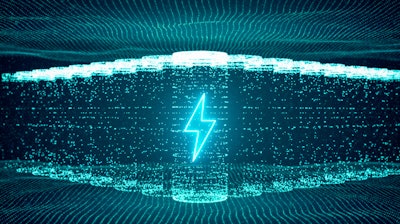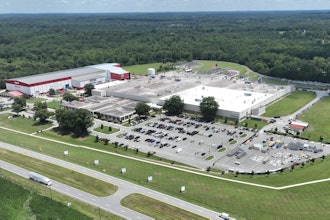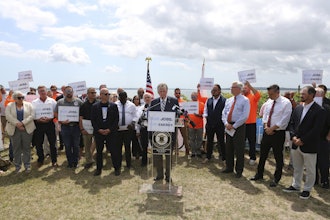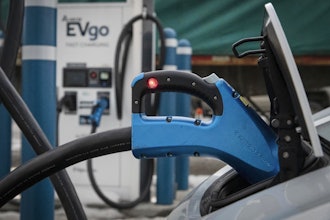
The Industrial Internet of Things (IIoT) is exploding, in large part due to the emergence of remote wireless sensors that enable greater convergence and interoperability between billions of devices no longer constrained by access to the AC power grid.
Self-powered wireless devices provide an immediate and cost effective solution for remote locations where logistical, environmental, regulatory and permitting hurdles make wireless connectivity a virtual necessity. These applications span all industrial sectors, including manufacturing and distribution, transportation infrastructure, energy production, environmental monitoring, healthcare, smart metering, process control, asset tracking, machine-to-machine (M2M), safety systems, and system control and data automation (SCADA), to name a few.
Certain industrial applications are being powered by energy harvesting devices in combination with Lithium-ion (Li-ion) batteries. However, the vast majority of remote wireless devices are powered by primary lithium batteries. Lithium delivers extended battery life with an intrinsic negative potential that exceeds all other metals. As the lightest non-gaseous metal, lithium offers the highest specific energy (energy per unit weight) and energy density (energy per unit volume), which reduces battery size and weight. Lithium cells also feature a normal operating current voltage (OCV) ranging between 2.7 and 3.6, and the electrolyte is non-aqueous, which extends the temperature range far beyond water-based chemistries.
While numerous primary lithium batteries are available, bobbin-type lithium thionyl chloride (LiSOCl₂) cells are overwhelmingly preferred for remote wireless applications because they offer the highest capacity, highest energy density, and lowest self-discharge rate of any lithium chemistry, thus enabling certain cells to operate reliably for up to 40 years.
Bobbin-type LiSOCl₂ chemistry also offers the widest possible temperature range (-80°C to 125°C), which is ideal for challenging environments such as automotive electronic toll tags, where an automotive windshield can experience heat soak up to 113°C (according to SAE) when parked, cooling down rapidly to room temperature. In cold weather, the opposite occurs, where the windshield experiences extreme cold soak followed by a rapid temperature rise.
In medical RFID asset tracking applications, bobbin-type LiSOCl₂ batteries can withstand multiple autoclave sterilization cycles without having to remove the battery, which reduces labor costs and improves data integrity. Specially modified bobbin-type LiSOCl₂ cells are also utilized in the cold chain to transport frozen foods, pharmaceuticals, tissue samples and transplant organs at controlled temperatures as low as -80°C, with certain cells tested to operate reliably at -100°C.
Extended battery life demands energy conservation
A prerequisite for 40-year battery life is low average daily energy consumption, which can be accomplished several ways. First, the device needs to operate mainly in a ‘standby’ mode that draws nominal amounts of current, periodically querying the data, and activating only when certain data thresholds have been exceeded. Once activated, the wireless device then needs to operate as energy efficiently as possible before returning to ‘standby’ mode. Energy conservation is further achieved through the integration of low power components and circuitry, as well as utilize a low-power communications protocol such as ZigBee, WirelessHART, LORA, etc.
Extended battery operating life is also dependent upon a very low self-discharge rate, which is tied to the battery's ability to harness the passivation effect. Due diligence is required during vendor selection, as a superior quality bobbin-type LiSOCl₂ cell can deliver an annual self-discharge rate as low as 0.7% per year, thus retaining nearly 70% of its original capacity after 40 years. By comparison, a lower quality bobbin-type LiSOCl₂ cell can have a self-discharge rate of up to 3% per year, losing 30% of its available capacity every 10 years, making 40-year life impossible.
Bobbin-type LiSOCl₂ cells work best for applications that require small amounts of average daily current. If the application requires periodic high pulses to power two-way communications, then a hybrid solution may be required that combines a standard bobbin-type LiSOCl₂ cell with a patented hybrid layer capacitor (HLC). The standard cell delivers low background current while the hybrid layer capacitor (HLC) delivers the high pulses (up to 15 A) needed to power wireless communications and other advanced functionality.
Supercapacitors are commonly utilized in consumer electronics to deliver high pulses. However, supercapacitors are rarely used in industrial applications due to serious drawbacks, including an a linear discharge curve that cannot utilize all available energy, low capacity, low energy density, and a very high annual self-discharge rate of up to 60% per year. Supercapacitors linked in series require the use of cell-balancing circuits that additional current to further shorten battery life.
Proof that bobbin-type LiSOCL₂ batteries can last 40 years
The best form of proof for 40-year battery life is actual experience in the field. Back in the mid 80’s, millions of bobbin-type LiSOCl₂ batteries were installed in the first generation of wireless meter transmitter units (MTUs) used in AMI/AMR gas and water utility metering applications. Twenty-eight years later, when these older MTUs began to be replaced by newer generation technology, random samples of these cells were tested and found to have a significant amount of unused capacity, even after nearly three decades in the field. Utility managers demand extended battery operating life to ensure greater network reliability by reducing long-term maintenance costs, which helps mitigate the potential risk of a large-scale system wide battery failure that could disrupt normal billing cycles, thus reducing the total cost of ownership.
As the pioneer and leading manufacturer of bobbin-type LiSOCl₂ batteries, Tadiran has been testing all of its battery chemistries (IXTRA, XOL, etc.) and cell sizes for over two decades, developing a comprehensive data matrix that simulates nearly every possible scenario seen in the field. This vast database contains vital test points that measure key performance metrics such as OC voltage, voltage under load, and self-discharge against variables such as temperature, load size, etc.
When designing a battery for a specific application environment, Tadiran’s engineers draw upon this database to simulate the depletion of available battery capacity over time based on factors such as annual self-discharge rate, low voltage point at load, and temperature. All calculations are based on historic testing data that is further validated by actual field results, never relying on theoretical data. These intensive long-term tests are performed multiple ways to cross check and further verify results. Here is a brief description of just some of the testing procedures that Tadiran utilizes:
1. Actual long term testing - Many cells of different ages are tested concurrently in the lab, including batteries that have been continually tested for over 30 years, and which are still operating reliably under different loads and test profiles.
2. Accelerated testing – We utilize a method known as the Arrhenius test (two-fold increase of reaction rate for every 10°C) to reduce the amount of time needed to run tests on very long-term applications. Arrhenius tests are run at 72°C (equivalent to roughly 32 lifetimes compared to operation at 22°C). It is important to interpret these test results properly, as an inferior cell that suffers from passivation can show a false positive result. Therefore, it is important not just to store a cell at 72°C and then perform the test, but to actually test the cell during 72°C storage.
The following example highlights the importance of accelerated testing: A sample of cells are tested at 72°C for one month while enough current is drawn to fully deplete the battery after one (1) month. The same test is performed for two (2) months at a rate of energy consumption that depletes the battery after 2 months. Other cells are similarly tested for 3, 4, 5 and 6 months, 1 year, and for 90 months, which is equivalent to hundreds of years of operation.
After 1 and 2 month testing, Tadiran XOL cells exhibit very low capacity because they are not meant to be depleted so quickly, as lithium batteries can be designed either to deliver a high usage rate or a low self-discharge rate, but not both. By contrast, Tadiran iXTRA cells and certain competitors will exhibit higher available capacity at such fast discharge rates but their self-discharge rate will be higher in other tests.
Starting with the 3 month test at 72°C (the equivalent of 8 years of operation at 22°C) the higher self-discharge rate of competing cells starts to become apparent as Tadiran cells begin to demonstrate higher available capacity, indicating a lower self-discharge rate. The longer this test is performed, the greater the margin of difference between a Tadiran cell and its competitors. This widening spread clearly indicates that the superior battery is losing less of its available capacity to self-discharge. Due to very low self-discharge, Tadiran cells can survive accelerated testing for 90 months at 72°C (the equivalent of hundreds of years of continuous operation).
3. Calorimeter testing – Calorimeters test the self-discharge rate of a battery by measuring any rise in temperature to water surrounding the battery, as these calories of energy are caused by battery self-discharge. Before undergoing this test, every battery should be completely stabilized for one year prior to ensure reliable results.
4. Field results – In addition to laboratory testing that calculates projected self-discharge rates, additional validation is provided by actual results from the field. For every product application, batteries in long-term use are randomly sampled to ensure that the amount of lithium left in the battery coincides with predictive models generated by ongoing test data. Another way to measure long-term battery performance is by monitoring the number of FITs (Failures In Time) in billions of device operating hours. Tadiran’s historical average for FITs is between 5 and 20, which is extremely low, further verifying the accuracy of our testing.
5. Lithium titration – in special instances where historical data points are not available (i.e. extreme temperature, prolonged high current pulses, short life time applications, etc.) cells are tested to verify the precise amount of lithium remaining in the anode under specific test conditions (i.e. partial discharge, temperature soaking, etc.). For example, after a battery has been tested for several months under elevated temperature and various discharge currents, it is cut open to dissolve its remaining lithium. From the titration test results, we can then calculate the self-discharge rate as a function of the applied currents and/or temperature. The higher the self-discharge rate, the less lithium will remain in the cell.
6. Competitive testing - Similar testing is performed on competing batteries to form a basis of comparison. Before performing tests on competing batteries, we make sure that all cells have been used for about a year to ensure that they are properly stabilized, and which serves to show the influence of any impurities in the electrolyte. From years of testing, and our accumulating database, we firmly believe that we know as much if not more about other manufacturers’ batteries than they know themselves. When a customer asks how we know for certain that a competitor’s cells will deliver inferior results for a given application, our knowledge and expertise is based on a huge body of empirical data, not conjecture.
Considering that our test engineers have accumulated over 100,000 application test points over the equivalent of over 10,000 operating years in the lab, then double checking these test results against actual field data, you can see why we can confidently claim that our batteries deliver unrivaled performance by offering the industry’s lowest self-discharge rate, providing redundant proof that only Tadiran batteries can achieve 40-year battery operating life.
As the pioneer and leader in bobbin-type LiSOCl₂ battery technology, Tadiran is committed to improving battery design and manufacturing to deliver unrivaled long-term power management solutions for remote wireless devices connected to the rapidly expanding IIoT.






















